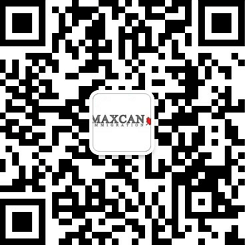Migrating to Canada from the US
Posted on 22/05/2018
Migrating to Canada from the US – The Normal Stuff
If you are moving from Canada to the US, you will still have to go through some of the same things everyone else has to in order to immigrate to Canada.
- If you are a lawful permanent resident of the U.S. and you are flying into Canada, you will still need an eTA (electronic travel authorization). Applying for an eTA is a simple, 4-step process unless your application requires supporting documents which can delay the process by a few days. The process of applying for and obtaining an eTA normally takes a short time and is done entirely online as follows:
- Have a valid passport ready along with a valid Debit Card or Credit Card. Remember that your eTA will be electronically linked to your passport. You must use the same passport to enter Canada as the one you use to apply for an eTA. If your passport expires after you have applied for and obtained an eTA, you will have to apply for a new eTA with your new passport.
- Use the online form here to apply for an eTA. You will also need a valid email address. You cannot save the information in your application and continue to fill it out at a later time or date. You must complete your online application for your eTA at one sitting. Have all your relevant information ready and at hand as well as your Credit or Debit Card.
- As soon as you complete the form you must pay the CAD$7.00 fee online with your Credit or Debit Card.
- You will receive an email at the address you have submitted in your application, stating that you have received your eTA or that you have been refused. Usually this email will arrive in a matter of minutes. You may occasionally receive an email requesting further documentation before your eTA can be approved. This may take up to 72 hours before you receive an email with instructions on what documents are needed.
- NAFTA does not change the requirements for permanent residency in Canada, the US, or Mexico. It does not confer any advantage in terms of applying for permanent residence status in Canada.
- NAFTA does not apply to lawful permanent residents of the US as far as the benefits listed below. You must be a citizen of the US or Mexico in order to benefit from the easier requirements listed below.
- NAFTA does not change any licensing or certification requirements for any workers applying to work and live in Canada. You must still meet any and all requirements whether you are applying as a US citizen or are applying from anywhere else.
- Spouses of US or Mexican citizens do not receive any preferential treatment under NAFTA. You are still governed by the Immigration and Refugee Protection Act and any applicable regulations.
- Citizens of Puerto Rico are covered by NAFTA, but citizens of Guam, the Northern Mariana Islands, American Samoa, and the U.S. Virgin Islands are not covered by NAFTA.
The long and the short of it is that, if you are immigrating to Canada, residence in the US or American citizenship does not speed up the process. Sorry for the bad news.
Migrating to Canada from the US – Exceptions
The main difference – or advantage – for those applying to enter Canada from the U.S. relates to temporary work permits under NAFTA Part V, Chapter 16 guidelines. NAFTA essentially facilitates the entry of business people and other professionals within certain categories who are engaged in business, trade or going to work temporarily in Canada and are citizens of the U.S. or Mexico, as well as Canadian citizens going to live and work in the U.S. or Mexico.
Business Visitors
Business travelers who are citizens of the U.S. are allowed into Canada to conduct their business without the need for a work permit. The following conditions must hold:
- They are involved in international business activities with the primary source of income and primary location of their business being outside of Canada.
- They are US (or Mexican) citizens.
- They have no intent of joining the Canadian labour force.
Business visitors must be involved in the following areas to qualify:
- Research and design
- Growth, manufacture, and production
- Marketing
- Sales
- Distribution
- After-sales service
- General service
Business visitors apply at their point of entry (POE) when they arrive at a Canadian airport or border crossing. They will need the following documentation:
- Proof of citizenship: normally a passport.
- Proof of their business activity.
- Evidence that their business activity is international and earns most of their income and are located outside of Canada. Business cards, pamphlets dealing with your business activity, or sometimes faxed documents are acceptable. A verbal statement may be accepted by immigration authorities.
If your business activity is after-service – installation, repair, or servicing of equipment or machinery or software – you will need to show that the equipment, machinery, or software was not made or created in Canada and that your work is pursuant to the sales contract involved. You must also be a supervisor with specialized knowledge, and not a “hands-on” worker.
Professionals:
You are exempt from a labour market impact assessment (LMIA) but you must fulfill the following requirements:
- Be a U.S. citizen (or a Mexican citizen)
- Have a profession identified in Appendix 1603. D. 1. Of NAFTA which identifies about 60 professions that can enter Canada in order to provide their services.
- Must have the qualifications to exercise your profession: University Degree or Technical college or similar diploma, or certification or any license required.
- Have pre-arranged employment with a Canadian employer
- Have the specific qualifications related to your profession as outlined in Appendix 1603. D. 1. Of NAFTA
You can apply for a work permit both at your point of entry (POE) when you arrive, or at a visa office before you travel to Canada. You can also apply for professional status in Canada, once you have been authorized to enter Canada as a temporary resident (that is, once you have your work permit).
You must present the following documentation:
- Proof of citizenship such as a passport
- Proof of offer of employment such as:
- Signed contract with a Canadian firm
- Evidence of an offer of employment from a Canadian firm
- Letter from an American (or Mexican) employer on whose behalf you will be providing your services
- Documentation supporting:
- Your employer in Canada
- Your profession
- Your position
- Your qualifications relating to your position and profession, including evidence that you meet the minimum requirements as listed in Appendix 1603. D. 1. Of NAFTA.
Intra-Company Transferees:
If you are an employee of a company that has a branch, or subsidiary, affiliate or parent company in Canada and are moving to Canada to work for the same company you worked for in the U.S. (or in Mexico) then you can obtain your work permit at your point of entry (POE), or previous to traveling in a visa office, in the same manner as a professional listed above. Aside from being an employee of a company with a presence in Canada you must:
- Be a U.S. citizen (or a Mexican citizen)
- Be working in an executive or managerial capacity
- Have worked in a similar position to the one you will hold in Canada for at least 1 year on a continual basis for the 3-year period immediately preceding your arrival at your POE in Canada.
When you arrive at your POE you will have to present proof that:
- Your work will be of an executive or managerial nature
- Your position requires specialized knowledge
- An outline describing your position in Canada and the work you will do
- An outline of the relationship between the Canadian firm and the U.S. or Mexican firm for which you have worked until your move to Canada.
Traders:
You must be a citizen of the U.S. or Mexico, and your firm must do a majority of it’s business with Canada (over 50%) and be involved in the exchange, purchase, or sale of goods and/or services. The following also applies to Traders:
- Your application for a work permit, however, should be submitted at a visa office rather than your point of entry (POE), unlike Professionals or Intra-Company Transferees.
- You must also fill out an Application for Trader/Investor Status (IMM 5321)
- Your employing firm must be majority owned by American or Mexican owners.
- Your position is supervisory or executive and involves essential skills (qualifications vital to the effectiveness of the firm’s Canadian operations).
Investors:
Applying for an investor visa is a relatively complex and detailed process so it is best to do so at a visa office before travelling to Canada. If you already have temporary status and are in Canada, you can also apply for an investor visa from within Canada. The requirements are nearly identical to those of a trader, however, the funds to be invested will have to comply with the following requirements:
- Any bank funds must be in a business account that is used for business purposes on a routine basis.
- Mortgage debt or commercial debt secured by the firm’s assets do not qualify as investment funds.
- Loans secured by the applicant´s own assets may be included.
- Lease or rent payments may be included under certain conditions.
- Goods and equipment transferred to Canada may be considered part of investment funds as long as they will be put to use in the enterprise under consideration.
- The investment must be significant in proportion to the total investment involved in the Canadian enterprise/firm under consideration. The actual amount will depend on the nature of the business and will be assessed as such. A consulting firm, for example, will require far smaller amounts than an auto-parts company that is establishing a new plant.
- It must be a productive investment that promotes jobs and growth in Canada rather than just an income for the investor and his or her family.
Summing up, qualified professionals, business people, transferees, traders, and investors can avail themselves of the advantages offered under NAFTA when moving to Canada for temporary work or business purposes from the U.S. or from Mexico. Make sure, however, that you understand the requirements for your category and do not just show up at an airport in Canada with your passport and a vague plan in mind.
Maxcan has years of experience handling NAFTA work permit applications. Contact us at our head office in Markham if you have any questions.
Posted in Tips




